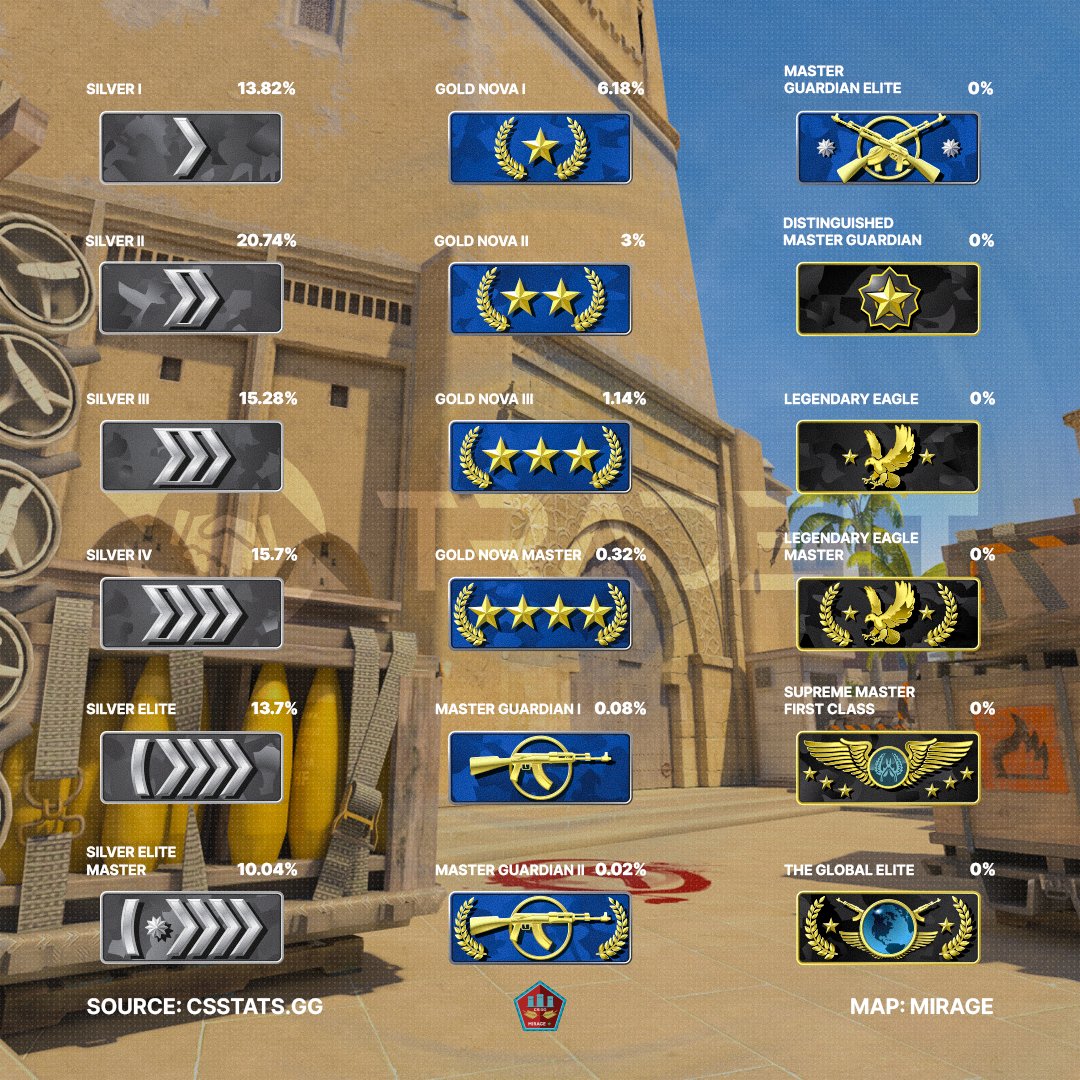Print Fix Hub
Your go-to source for everything print-related, from troubleshooting to tips.
Rank & Shenanigans: Inside the Whimsical World of CS2 Matchmaking Ranks
Dive into the hilarious and chaotic realm of CS2 matchmaking ranks—discover tips, tricks, and epic tales that will keep you hooked!
Decoding the Mystery: How CS2 Matchmaking Ranks Truly Work
In the world of competitive gaming, understanding how CS2 matchmaking ranks truly work can often feel like unraveling a complex puzzle. CS2, the latest iteration in the renowned Counter-Strike series, employs a refined matchmaking system designed to enhance player experience by pairing individuals of similar skill levels. This system uses various metrics, including match performance and overall player rank, to assess your abilities. For instance, winning matches consistently against higher-ranked players can lead to an increase in your matchmaking rank, while losing matches against lower-ranked opponents may result in a decline. This dynamic encourages players to continually improve their skills to climb the ranks effectively.
One critical factor in CS2 matchmaking is the importance of MMR (Matchmaking Rating), which plays a pivotal role in determining player ranks. MMR is calculated based on multiple factors, including individual performance stats such as kills, deaths, and assists, as well as overall team performance in a match. Additionally, the rank system in CS2 is designed to be transparent; players can view their ranks and understand how different behaviors, like teamwork and communication, contribute to their overall score. To master the nuances of CS2 matchmaking ranks, players should focus not only on personal gameplay but also on enhancing their teamwork skills, as collaboration often leads to improved outcomes and rank progression.

Counter-Strike is a popular tactical first-person shooter game that pits teams against each other in a battle of strategy and skill. One of the unique weapons in the game is the scar 20, known for its versatility and power, making it a favored choice among players.
The Whimsical Journey: From Silver to Global - A CS2 Rank Climber's Tale
In the realm of competitive play, every CS2 rank climber has a unique story, but few can match the whimsical journey of a player who transitioned from Silver to global rank. It all began in the humbling lobbies of Silver, where the player's skills were still being sharpened, and strategies were being formulated. Through countless hours of practice, the climber learned the importance of not just skill, but also teamwork and communication. This journey was not merely about winning matches; it was about forging bonds and understanding the intricacies of gameplay that set great players apart from the average. As the player navigated through the ranks, each match proved to be a lesson in resilience and determination.
As the player's rank steadily increased, the challenges became greater. From Silver to Gold, and eventually beyond, the journey was filled with whimsical twists and unforeseeable obstacles. At times, they faced daunting opponents and fluctuating matchmaking experiences. Yet, the strong support from their fellow gamers helped keep spirits high. Climbing to the global rank was not merely a personal achievement; it became a testament to the power of perseverance, adaptability, and the joy of playing. Ultimately, the climber's story serves as a reminder that in the world of CS2, every player's journey is as unique as the challenges they face, and sometimes, the journey itself is the most rewarding part.
Common Misconceptions About CS2 Matchmaking: What Players Need to Know
One of the most prevalent misconceptions about CS2 matchmaking is the belief that a player's rank solely defines their skill level. While rank is an important aspect, it does not account for factors such as teamwork, communication, and game sense. Many players assume that higher ranks consist only of highly skilled individuals, but this is not always the case. In reality, the matchmaking system aims to create balanced games by pairing players with complementary skill sets. Therefore, it's vital for players to focus on improving their overall gameplay rather than just obsessing over rank.
Another common myth is that the matchmaking system consistently favors one team over another. Players often feel frustrated when losing games and may blame the system for creating 'unfair' matches. However, CS2 matchmaking uses complex algorithms designed to analyze numerous game metrics in real time. Factors such as player performance, recent win-loss ratios, and even geographic location play a role in match placements. Understanding this can help players see that while losses can be discouraging, they are part of a larger learning process aimed at creating a fun and competitive environment.